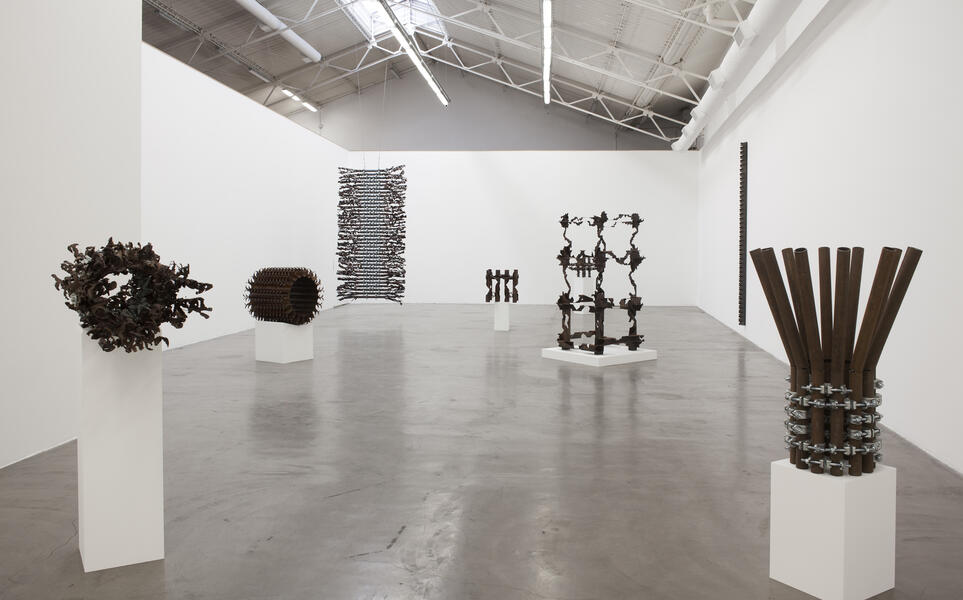Luciana Lamothe: Ensayos de abertura
Ruth Benzacar Gallery, Buenos Aires. March - April, 2018

The nine pieces that make up the exhibition are made of metal, open iron pipes with various procedures and fastened with scaffolding clamps in different combinations. The material is perforated, cut and twisted. The ends of some pieces were burned with welding machine at maximum power, an operation that left remnants of slag and wire. But this centrifugal proliferation of irregularities is compensated by the centripetal composition, achieved with the distribution of weights and the use of the clamps, a counterpoint that maintains the unitary closure of the classical image.
If we consider the representations of gender that gravitate on the materials used, the material violence contained in the broken material and the potential of effective damage on the body of the spectators, it becomes evident that the recourse to formal canons is only sought as a gesture that transcends the quote to be almost a grimace of irony. Lamothe's objects have the aesthetic efficacy of an oxymoron and the political efficacy of a tactic, an operation that conceals its critical potential with innocuous forms. The tradition, like the possible resonances of the Argentine sculptural school (one Noemi Gerstein or one Norberto Gómez) just provides a working table on which the political procedure is mounted.
The movement provoked in the spectator is phenomenological: from one moment to another the serene appearances are interrupted, as if the real content suddenly made a cut in good form. The corruption of the limits, the forced materiality, the aggression exerted on something that is expected to be closed and effective as a pipeline ultimately metaphorize a scene of illegal violence, the criticism of a regime of discourse and property. Sharp edges condense the paradox of an image that attracts and repels.
Perhaps the violence vibrates in the same frequency as the commotion for the beautiful. Lamothe inoculates in the aesthetic experience of the visitor an imprecise horror in which the violation of property and naturalized boundaries appear. Before the rusty material the spectator undertakes a regressive search for protection in good forms; in a serene, normative visuality. Precision, order and grace encrypt a kind of fossil, a hieroglyph of social violence. Celebrated and subverted, the values of the classical image are transformed in Lamothe's work into a cunning of critical thinking.




